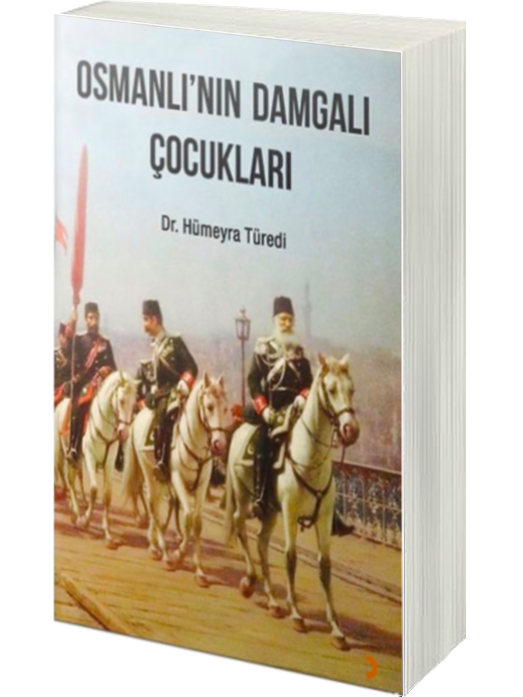
In recent years, CLIL (Content and Language Integrated Learning) has become a buzzword among educators who want to make classrooms more dynamic and prepare students for a global world. While this approach has worked well in many bilingual and international schools, bringing it into public schools is a different story—full of both promise and hurdles.
One of the biggest challenges is finding teachers who can do it all. Many public school teachers are trained to teach either a subject like math or history or a foreign language—but rarely both at once. A good CLIL teacher needs to feel comfortable explaining science in English, for example, while also helping students build the language skills they need to talk about it. This combination of deep content knowledge and strong language ability doesn’t appear overnight. It calls for training programs that truly prepare teachers for this dual role.
Then there’s the question of how schools are structured. Many public school systems work with rigid national curricula, where lessons, textbooks, and exams are all set in stone. Teachers often don’t have the freedom to experiment with cross-curricular methods or adapt lessons for a bilingual approach. CLIL, on the other hand, thrives on flexibility. It needs teachers and students to move fluidly between language and content—and that can’t happen when every minute of the lesson is scripted.
Student readiness is another piece of the puzzle. In a typical public school classroom, students come from all sorts of language backgrounds. Some may be comfortable enough to tackle history or science in a foreign language. Others may struggle to form basic sentences. Good CLIL lessons include scaffolding—visuals, simplified texts, group work—so everyone can follow along. But underfunded schools may not have the resources, staff, or time to give students this extra support.
Assessment adds to the challenge. Most schools still rely on standardized tests that separate language learning and subject knowledge. CLIL calls for new kinds of tests that measure how well students use language to explain what they know. Creating these tools, training teachers to use them fairly, and making sure they fit national standards takes time and careful planning.
There are cultural concerns too. In some countries, people worry that using a foreign language in the classroom might weaken the national language or give unfair advantages to students from wealthier families. In Turkey, for instance, CLIL is often seen as something only expensive private schools can offer. If we want CLIL to become truly inclusive, it needs to be shown as a way for all students—no matter their background—to build new skills and confidence.
Making this shift takes more than just individual effort. School leaders and policymakers need to back teachers up with training, clear guidelines, and enough resources to make CLIL sustainable. Teachers who feel supported are more likely to keep trying new things, even when it’s tough.
Despite all these obstacles, CLIL is not out of reach for public schools. In fact, its focus on critical thinking, cultural awareness, and real-life skills fits perfectly with what education systems around the world want for their students. But big changes don’t happen overnight. Small pilot programs, team teaching, and sharing ideas between schools can help bridge the gap.
In the end, if we really want CLIL to work for everyone, we need to see it as more than just a trend for elite schools. It can be a path toward classrooms that prepare all students to learn, communicate, and connect in our multilingual world—if we’re willing to invest in teachers, rethink rigid systems, and believe that every student deserves the chance to learn in new ways.
References
- Coyle, D., Hood, P., & Marsh, D. (2010). CLIL: Content and Language Integrated Learning. Cambridge University Press.
- Mehisto, P. (2012). Criteria for producing CLIL learning material. Encuentro, 21, 15–33.
- Eurydice Report (2006). Content and Language Integrated Learning (CLIL) at School in Europe. Brussels: European Commission.
- Bentley, K. (2010). The TKT Course CLIL Module. Cambridge University Press.
- Dalton-Puffer, C., Llinares, A., Lorenzo, F., & Nikula, T. (2014). Language Use and Language Learning in CLIL Classrooms. Amsterdam: John Benjamins.
You can read the Turkish version of the article below.
Devlet Okullarında CLIL Uygulamanın Zorlukları
Son yıllarda CLIL (İçerik ve Dil Entegreli Öğrenme), sınıfları daha dinamik hale getirmek ve öğrencileri küresel bir dünyaya hazırlamak isteyen eğitimciler arasında oldukça popüler hale geldi. Bu yaklaşım, birçok iki dilli ve uluslararası okulda başarıyla uygulanıyor olsa da devlet okullarına entegre edilmesi bambaşka bir hikâye — umut vaat eden ama aynı zamanda pek çok engelle dolu bir süreç.
Karşılaşılan en büyük zorluklardan biri, her iki alanda da yetkin öğretmenler bulmak. Pek çok devlet okulu öğretmeni ya matematik ya da tarih gibi bir alan dersi ya da yabancı dil eğitimi üzerine yetiştirilmiştir — ama ikisini birden aynı anda verebilecek şekilde değil. Oysa iyi bir CLIL öğretmeni, örneğin İngilizce olarak fen anlatırken aynı zamanda öğrencilerin bu konuyu anlatacak dil becerilerini geliştirmelerine de yardımcı olabilmelidir. Bu tür bir içerik bilgisi ve dil yetkinliği kombinasyonu bir gecede ortaya çıkmaz. Öğretmenleri bu ikili role hazırlayacak kapsamlı eğitim programlarına ihtiyaç vardır.
Bir diğer mesele ise okulların yapısal kısıtlamalarıdır. Pek çok devlet okulu sistemi, müfredat, ders kitapları ve sınavların sıkı şekilde belirlendiği katı ulusal programlarla çalışır. Öğretmenler, dersleri iki dilliliğe uyarlamak ya da disiplinler arası yöntemler denemek konusunda özgür değildir. Oysa CLIL esneklik ister. Öğretmenlerin ve öğrencilerin içerik ile dil arasında rahatça geçiş yapabilmesi gerekir — ve bu, her dakikası önceden planlanmış bir ders ortamında mümkün değildir.
Öğrencilerin hazırbulunuşluk düzeyi de önemli bir diğer unsurdur. Tipik bir devlet okulunda öğrenciler çok çeşitli dil geçmişlerine sahiptir. Bazıları yabancı bir dilde tarih ya da fen öğrenmeye hazır olabilirken, bazıları basit cümleler kurmakta bile zorlanabilir. Başarılı CLIL dersleri görseller, sadeleştirilmiş metinler ve grup çalışmaları gibi destekleyici yapılar içerir. Ancak maddi imkânları sınırlı olan okulların bu ekstra desteği sağlayacak kaynakları, personeli ya da zamanı olmayabilir.
Değerlendirme süreci de başka bir zorluk yaratır. Çoğu okul hâlâ dil becerisi ve konu bilgisini ayrı ayrı ölçen standart testlere dayanır. CLIL ise öğrencilerin bilgilerini dile dökme becerisini ölçen yeni türden sınavlar gerektirir. Bu tür araçları geliştirmek, öğretmenleri adil şekilde kullanmaları için eğitmek ve bu sistemi ulusal standartlara uygun hale getirmek zaman ve özenli bir planlama ister.
Kültürel endişeler de göz ardı edilemez. Bazı ülkelerde, sınıflarda yabancı dil kullanmanın ulusal dili zayıflatabileceği ya da varlıklı ailelerin çocuklarına haksız avantaj sağlayabileceği yönünde kaygılar vardır. Örneğin Türkiye’de CLIL genellikle sadece pahalı özel okullara özgü bir uygulama olarak görülür. Oysa CLIL’in gerçekten kapsayıcı hale gelmesi için, her geçmişten öğrencinin yeni beceriler ve özgüven kazanmasını sağlayan bir yol olarak sunulması gerekir.
Bu dönüşüm sadece bireysel çabayla olmaz. Okul yöneticileri ve politika yapıcılar, öğretmenleri eğitim, net yönergeler ve yeterli kaynaklarla desteklemelidir. Kendini desteklenmiş hisseden öğretmenler, zor da olsa yenilik yapmaya daha istekli olurlar.
Tüm bu engellere rağmen, CLIL devlet okulları için ulaşılmaz değildir. Aksine, eleştirel düşünme, kültürel farkındalık ve gerçek hayat becerilerine odaklanması, dünya genelindeki eğitim sistemlerinin öğrencileri için hedeflediği becerilerle birebir örtüşür. Ancak büyük değişimler bir anda gerçekleşmez. Küçük pilot projeler, ekip öğretimi ve okullar arası işbirlikleri bu geçişi kolaylaştırabilir.
Sonuç olarak, CLIL’i yalnızca elit okullara özgü bir trend olarak görmekten vazgeçmeliyiz. CLIL, tüm öğrencileri çok dilli bir dünyada öğrenmeye, iletişim kurmaya ve bağ kurmaya hazırlayan bir yol olabilir — eğer öğretmenlere yatırım yapmaya, katı sistemleri yeniden düşünmeye ve her öğrencinin farklı yollarla öğrenmeyi hak ettiğine inanmaya hazır olursak.
Kaynakça
Coyle, D., Hood, P., & Marsh, D. (2010). CLIL: Content and Language Integrated Learning. Cambridge University Press.
Mehisto, P. (2012). Criteria for producing CLIL learning material. Encuentro, 21, 15–33.
Eurydice Report (2006). Content and Language Integrated Learning (CLIL) at School in Europe. Brussels: European Commission.
Bentley, K. (2010). The TKT Course CLIL Module. Cambridge University Press.
Dalton-Puffer, C., Llinares, A., Lorenzo, F., & Nikula, T. (2014). Language Use and Language Learning in CLIL Classrooms. Amsterdam: John Benjamins.



